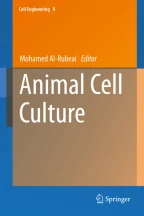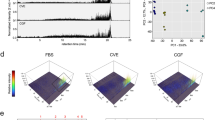Serum and Protein Free Media

For many decades bovine serum has been used as an essential component for the growth of animal cells in culture. However, the combined disadvantages of variability in composition, cost but particularly the potential for contamination with viruses or prions has been the driver for the substitution of serum with a more defined and animal-component free media. For some cell lines substitution with just a few simple ingredients can provide an effective liquid media for growth. However, for a number of cell lines finding a suitable serum-free formulation for growth has been very challenging. Because of the complexity of these formulations statistically designed methods have been adopted to ensure a rational approach to media design. This, as well as the increasing availability of microbially-produced recombinant forms of animal proteins has been significant in the development of animal-component free and chemically defined media. Sometimes chemically-defined media have poorer characteristics for growth promotion than the serum-based formulations that they replace. However, incremental steps of improvement are possible by the addition of key ingredients or by adaptation of the cells to newly formatted serum-free media.
This is a preview of subscription content, log in via an institution to check access.
Access this chapter
Subscribe and save
Springer+ Basic
€32.70 /Month
- Get 10 units per month
- Download Article/Chapter or eBook
- 1 Unit = 1 Article or 1 Chapter
- Cancel anytime
Buy Now
Price includes VAT (France)
eBook EUR 160.49 Price includes VAT (France)
Softcover Book EUR 210.99 Price includes VAT (France)
Hardcover Book EUR 210.99 Price includes VAT (France)
Tax calculation will be finalised at checkout
Purchases are for personal use only
Similar content being viewed by others

In vitro culture of bovine fibroblasts using select serum-free media supplemented with Chlorella vulgaris extract
Article Open access 08 February 2023
Best practices for the use and evaluation of animal serum as a component of cell culture medium
Article 21 July 2017
Best practices for media selection for mammalian cells
Article 19 July 2017
References
- Barnes D, Sato G (1980) Serum-free cell culture: a unifying approach. Cell 22(3):649–655 ArticleCASPubMedGoogle Scholar
- Castro PM, Hayter PM, Ison AP, Bull AT (1992) Application of a statistical design to the optimization of culture medium for recombinant interferon-gamma production by Chinese hamster ovary cells. Appl Microbiol Biotechnol 38:84–90 ArticleCASPubMedGoogle Scholar
- Chang TH, Steplewski Z, Koprowski H (1980) Production of monoclonal antibodies in serum free medium. J Immunol Methods 39:369–375 ArticleCASPubMedGoogle Scholar
- Dulbecco R, Freeman G (1959) Plaque production by the polyoma virus. Virology 8:396–397 ArticleCASPubMedGoogle Scholar
- Eagle H (1955) Nutrition needs of mammalian cells in tissue culture. Science 122:501–514 ArticleCASPubMedGoogle Scholar
- Eagle H (1959) Amino acid metabolism in mammalian cell cultures. Science 130:432–437 ArticleCASPubMedGoogle Scholar
- Florini JR, Roberts SB (1979) A serum-free medium for the growth of muscle cells in culture. In Vitro 15:983–992 ArticleCASPubMedGoogle Scholar
- Gopas J, Ono M, Princler G, Smith MR, Tainsky MA, Siddiqui MA, Wishniak O, Segal S, Kuwano M, Kung HF (1992) EGF receptor activity and mitogenic response of Balb/3 T3 cells expressing Ras and Myc oncogenes. EGF receptor activity in oncogene transformed cells. Cell Mol Biol 38:605–614 CASPubMedGoogle Scholar
- Gupta A, Harrison K, Maes D (2014) Understanding hydrolysate complexity. Genet Eng Biotechnol News 34:28–29 ArticleGoogle Scholar
- Ham RG (1965) Clonal growth of mammalian cells in a chemically defined, synthetic medium. Proc Natl Acad Sci U S A 53:288–293 ArticleCASPubMed CentralPubMedGoogle Scholar
- Ham RG, Mckeehan WL (1979) Media and growth requirements. Methods Enzymol 58:44–93 ArticleCASPubMedGoogle Scholar
- Hayashi I, Larner J, Sato G (1978) Hormonal growth control of cells in culture. In Vitro 14:23–30 ArticleCASPubMedGoogle Scholar
- Hodge G (2005) Media development for cell culture. Biopharm Int 18:54–57 Google Scholar
- Howard A, Udenigwe CC (2013) Mechanisms and prospects of food protein hydrolysates and peptide-induced hypolipidaemia. Food Funct 4:40–51 ArticleCASPubMedGoogle Scholar
- Hsueh HW, Moskowitz M (1973) A growth factor for animal cells derived from peptone. I. Isolation and characterization of the growth factor. Exp Cell Res 77:376–382 ArticleCASPubMedGoogle Scholar
- Jayme D, Watanabe T, Shimada T (1997) Basal medium development for serum-free culture: a historical perspective. Cytotechnology 23:95–101 ArticleCASPubMed CentralPubMedGoogle Scholar
- Komolov IS, Fedotov VP (1978) Influence of insulin on mitotic rate in cultivated mammalian cells. Endocrinol Exp 12:43–48 CASPubMedGoogle Scholar
- Lee GM, Kim EJ, Kim NS, Yoon SK, Ahn YH, Song JY (1999) Development of a serum-free medium for the production of erythropoietin by suspension culture of recombinant Chinese hamster ovary cells using a statistical design. J Biotechnol 69:85–93 ArticleCASPubMedGoogle Scholar
- Luo Y, Pierce KM (2012) Development toward rapid and efficient screening for high performance hydrolysate lots in a recombinant monoclonal antibody manufacturing process. Biotechnol Prog 28:1061–1068 ArticleCASPubMedGoogle Scholar
- Mather JP, Sato GH (1979) The growth of mouse melanoma cells in hormone-supplemented, serum-free medium. Exp Cell Res 120:191–200 ArticleCASPubMedGoogle Scholar
- Merten OW (2002) Virus contaminations of cell cultures – a biotechnological view. Cytotechnology 39:91–116 ArticleCASPubMed CentralPubMedGoogle Scholar
- Metcalfe HFR, Froud SJ (1994) The use of 2-hydroxy-2,4,6-cycloheptarin-1-one (tropolone) as a replacement for transferrin. In: Spier Re GJ, Berthold W (eds) Animal cell technology: products of today, prospects of tomorrow. Butterworth-Heinemann, Oxford, UK Google Scholar
- Michiels J, Barbau J, Deboel S, Dessy S, Agathos SN, Schneider YJ (2011) Characterisation of beneficial and detrimental effects of a soy peptone, as an additive for CHO cell cultivation. Process Biochem 46:671–681 ArticleCASGoogle Scholar
- Morgan JF, Morton HJ, Parker RC (1950) Nutrition of animal cells in tissue culture; initial studies on a synthetic medium. Proc Soc Exp Biol Med 73:1–8 ArticleCASPubMedGoogle Scholar
- Morris AE, Schmid J (2000) Effects of insulin and LongR(3) on serum-free Chinese hamster ovary cell cultures expressing two recombinant proteins. Biotechnol Prog 16:693–697 ArticleCASPubMedGoogle Scholar
- Orly J, Sato G (1979) Fibronectin mediates cytokinesis and growth of rat follicular cells in serum-free medium. Cell 17:295–305 ArticleCASPubMedGoogle Scholar
- Pasupuleti VHC, Demain AL (2010) Applications of protein hydrolysates in biotechnology. In: Pasupuleti VADA (ed) Protein hydrolysates in biotechnology. Springer, Dordrecht ChapterGoogle Scholar
- Schlaeger EJ (1996) The protein hydrolysate, Primatone RL, is a cost-effective multiple growth promoter of mammalian cell culture in serum-containing and serum-free media and displays anti-apoptosis properties. J Immunol Methods 194:191–199 ArticleCASPubMedGoogle Scholar
- Siemensma A, Babcock J, Wilcox C, Huttinga H (2010) Towards an understanding of how protein hydrolysates stimulate more efficient biosynthesis in cultured cells. In: Pasupuleti VADA (ed) Protein hydrolysates in biotechnology. Springer, Dordrecht Google Scholar
- Simmons JG, Hoyt EC, Westwick JK, Brenner DA, Pucilowska JB, Lund PK (1995) Insulin-like growth factor-I and epidermal growth factor interact to regulate growth and gene expression in IEC-6 intestinal epithelial cells. Mol Endocrinol 9:1157–1165 CASPubMedGoogle Scholar
- Simms E, Gazdar AF, Abrams PG, Minna JD (1980) Growth of human small cell (oat cell) carcinoma of the lung in serum-free growth factor-supplemented medium. Cancer Res 40:4356–4363 CASPubMedGoogle Scholar
- Stoker M, Macpherson I (1964) Syrian hamster fibroblast cell line Bhk21 and its derivatives. Nature 203:1355–1357 ArticleCASPubMedGoogle Scholar
- Vogt M, Dulbecco R (1960) Virus-cell interaction with a tumor-producing virus. Proc Natl Acad Sci U S A 46:365–370 ArticleCASPubMed CentralPubMedGoogle Scholar
Author information
Authors and Affiliations
- Department of Microbiology, University of Manitoba, Winnipeg, MB, Canada Michael Butler
- Michael Butler
You can also search for this author in PubMed Google Scholar
Corresponding author
Editor information
Editors and Affiliations
- University College Dublin, Dublin, Ireland Mohamed Al-Rubeai
Rights and permissions
Copyright information
© 2015 Springer International Publishing Switzerland
About this chapter
Cite this chapter
Butler, M. (2015). Serum and Protein Free Media. In: Al-Rubeai, M. (eds) Animal Cell Culture. Cell Engineering, vol 9. Springer, Cham. https://doi.org/10.1007/978-3-319-10320-4_8
Download citation
- DOI : https://doi.org/10.1007/978-3-319-10320-4_8
- Published : 05 November 2014
- Publisher Name : Springer, Cham
- Print ISBN : 978-3-319-10319-8
- Online ISBN : 978-3-319-10320-4
- eBook Packages : Biomedical and Life SciencesBiomedical and Life Sciences (R0)
Anyone you share the following link with will be able to read this content:
Get shareable link
Sorry, a shareable link is not currently available for this article.
Copy to clipboard
Provided by the Springer Nature SharedIt content-sharing initiative


